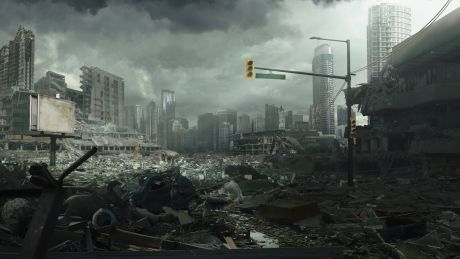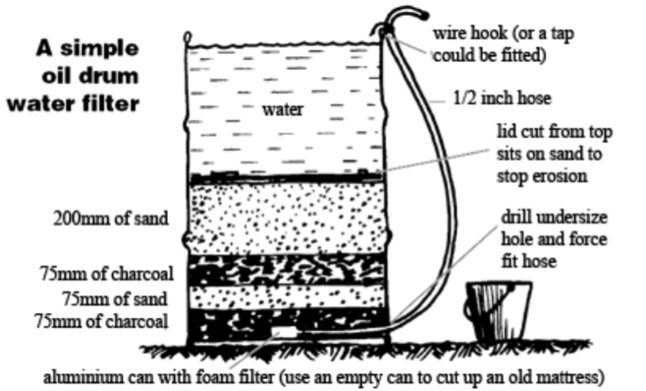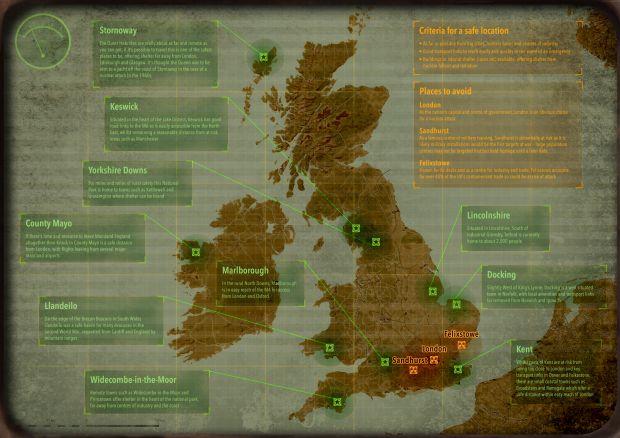How to Survive a Nuclear Attack
Forget Ray Mears and Bear Grylls, this is survival on a different scale. Here are our top ten tips for surviving the apocalypse

What would you do if the world ended? Assuming you’ve not already built a nuclear bunker, you’re going to need all the help you can get. We spoke to Daniel Salisbury, a nuclear security research associate at the Centre for Science and Security Studies, King’s College London, and The Last Survivors to put together a list of ten things that could help you survive a nuclear attack.
1. Evacuation
- As tensions rise in the run-up to war, those situated near prominent targets – military installations, the centres of political power and other strategic industrial facilities – could increase their chances of survival by fleeing to the countryside.
- Previous government plans suggest that should tensions escalate to the point where an attack risk is imminent, the population would be given enough warning to make escape plans.
2. Choosing your location
- Think carefully about where to head to and be sure to leave in plenty of time.
- Should the order to evacuate be given, roads are likely to become gridlocked and petrol in short supply so be prepared for a long journey.
- Select a location as far as possible from military installations, high population areas and centres of industry.
- Your chosen spot should offer shelter and amenities – ideally in the form of buildings in a small village but, failing that, seek out natural shelter such as caves.
3. Staying put
- If there isn’t time to make an escape, you’re best off making your home as safe as possible.
- Anything in the immediate vicinity of a blast is unlikely to be left standing, but it is important for those on the outskirts to have sufficient shelter to keep them inside away from the threat of radiation and nuclear fallout.
- Dedicate a room with as few external walls as possible as a makeshift shelter, and equip this with as much food, water and essentials as necessary to ensure you won’t need to visit the outside world for a while.
4. Staying inside
- After the initial explosion, the biggest risk to your health is from nuclear fallout. This means the radiation, which is found in debris lifted into the fireball during the explosion (and vaporised) and the residues of the weapon itself. The fallout is carried by the wind and falls on the ground.
- Depending on wind direction and the size of the weapon, fallout can travel hundreds of kilometres so in the aftermath of an attack, even from a significant distance, it is important to remain inside.
- The danger from fallout is strongest for the first 48 hours, but you may need to remain inside for up to two weeks.
5. Stocking up
- Whether you’re staying at home or moving on, resources are likely to be scarce in the aftermath of an attack so be prepared.
- Items to store up include tinned food, bottled water (as much as possible for both washing and drinking), blankets, sheets and layers of warm clothing.
- Even if you are fleeing your home, make sure to take bedding and pillows as, with so many people making their escape, you may need to bed down in unexpected places.
6. Sourcing water
Get the Coach Newsletter
Sign up for workout ideas, training advice, reviews of the latest gear and more.
- In the aftermath of an attack water will be in short supply. While people can potentially last up to three weeks without food, you can only last a maximum of three days without water.
- Standing water supplies may be contaminated, so using tap or mains water is a risk you can’t take. Water itself can’t actually become irradiated – it is just the small particles of dust and debris that pollute the water which make it dangerous. There’s also a risk of bodies floating in the source of your water supply causing disease. Water can be found in:
- Old radiator systems
- The top of a toilet
- Water heaters
- Car radiators
- You can make a water filter using sand, gravel, charcoal and some cloth built up in layers in a bottle.

7. Refining your shopping list
- When stocking up on food think very carefully about what you buy. Canned foods and other foods that last a long time are ideal because even once you are safe to leave shelter, depending on your proximity to a blast, it’s unlikely shops will be able to restock or provide additional supplies,
- Keep plenty of food which can be eaten cold in case there are issues with fuel supplies and electricity.
- Your saviours will be high-protein foods, such as nuts and seeds, and sugary foods, such as chocolate bars. They will give you energy and won’t go off quickly.
8. Working as a team
- If you are in a confined space with several other people, work together and make the most of your individual skills.
- Stronger members of the team are best put to work ensuring your shelter is secure and scavenging for supplies in the aftermath of the attack.
- Younger or weaker members of the team can be in charge of cooking and preparing foods.
- Make sure someone is allocated to keep stock of supplies – you will need to be vigilant and careful with what you use to ensure you don’t run out.
9. Learning basic first aid
- In the aftermath of the attack there may be survivors with injuries that are minor but, left untreated, could result in infection or death.
- Be prepared with bandages and disinfectant. In a worst-case scenario you can pack a wound with dirt to stop the patient from losing too much blood, but this is only advisable if you are able to reach a hospital soon.
- Hospitals will be overrun with casualties so any minor ailments which can be treated at home should be.
10. Focusing on hygiene
- Once the immediate risk from impact lessens there are continuing risks of communicable diseases such as cholera and typhoid, so good hygiene is crucial.
- Your first aid kit should include soap and hand sanitiser, which must be used frequently to stop infection spreading.
- If there are any dead bodies in the immediate area it is important to bury these, and mark the spot. This reduces the risks of infection from decaying bodies.
Survival map
(Click here for full size image)

Fallout 4, the next generation of open-world gaming, launches on Xbox One, PlayStation 4 and PC on 10th November 2015. To pre-order visit game.co.uk/fallout
Matt joined Men’s Fitness in April 2014 as features writer after spending several years writing for a luxury lifestyle magazine, swapping champagne and canapés for cardio and leg days.
Matt is a keen Thai boxer and his interest in fitness took off when he made the decision to compete semi-professionally and had to get in shape. Training aside, he says the worst thing about fighting is resisting the urge to apologise all the time.
Oh, and he’s still on the look out for a decent fight nickname after being told ‘The Best’ was reaching a little bit…
Favourite move: Any kind of squat variation
Favourite sport: MMA and Muay Thai kickboxing
Personal best: Competing in a semi-pro K1 bout
Targets: Sub-1hr 40m half marathon and winning a fight by KO
Scariest MF moment: Writing about myself in the third-person for this profile
Favourite MF website story: Spider-Man workout
Favourite trainer quote: ‘Hands up, chin down’ – every striking coach ever
Biggest gym crime: Avoiding the weights and sticking to the treadmill
